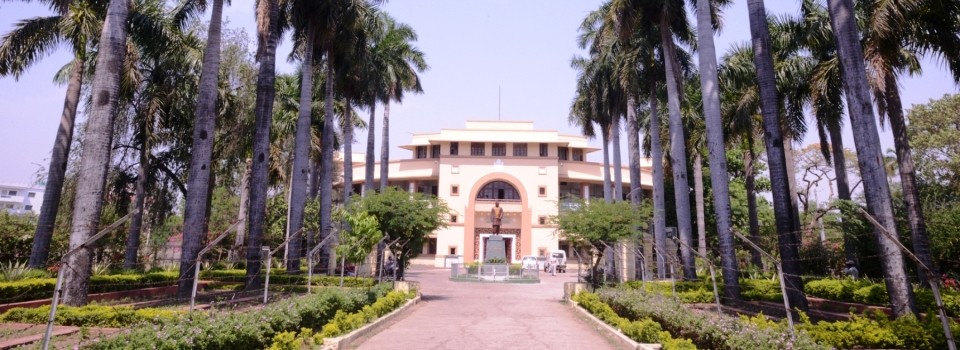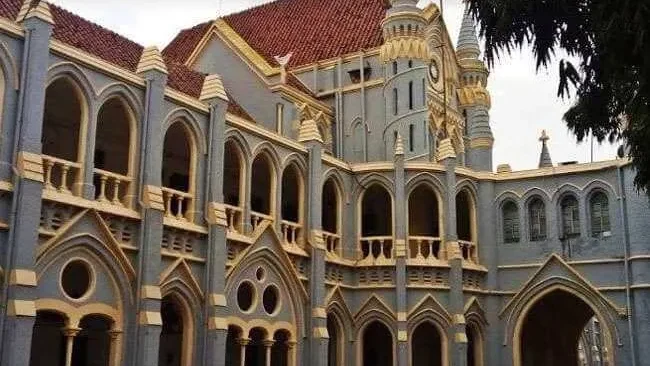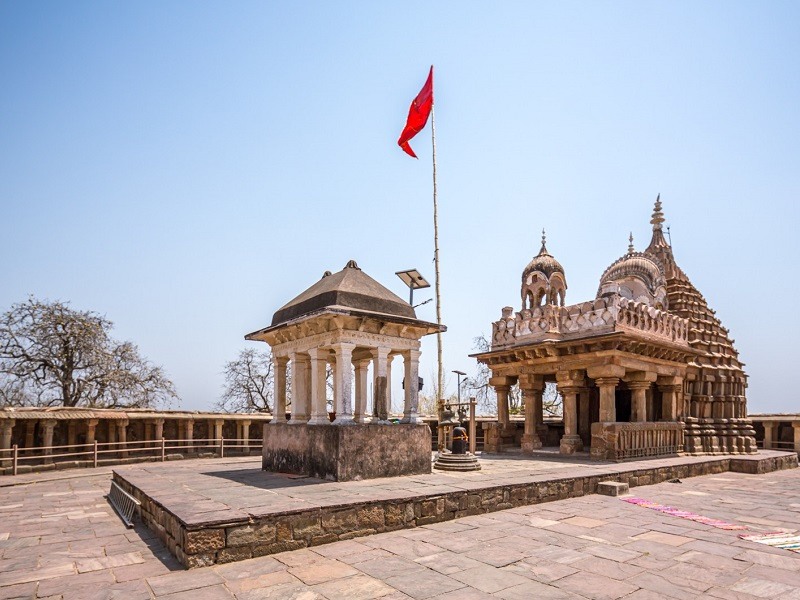Budget Stay Starting @ ₹500 to ₹1000 in Jabalpur
What Are the Must-Visit Historical Places in Jabalpur?


We have explored several fascinating aspects of Jabalpur, from its vibrant attractions to the best spots for outings with family and friends. Now, let’s dive into the rich history of this city and uncover its historical significance. Jabalpur is home to numerous historical places that reflect its cultural legacy and teach us about the roots of our present. These monuments and landmarks stand as testaments to the city’s glorious past and offer a glimpse into its unique heritage.
So, if you’re planning to explore the historical places in Jabalpur, book your stay at Hotel Anand. It’s a budget-friendly hotel in Jabalpur under 500 near the railway station, making it the perfect base for your travel plans. Conveniently located at the city’s center, Hotel Anand provides affordable 24-hour accommodations and allows easy access to every corner of Jabalpur. Whether you’re a history enthusiast or a casual traveler, this hotel ensures comfort and convenience throughout your stay.
Here’s a curated list of must-visit historical places in Jabalpur:
Shaheed Smarak: Honoring the Freedom Fighters


The site holds immense significance as a symbol of India’s struggle for freedom during the British Raj. This iconic monument commemorates the sacrifices made by freedom fighters and honors the contributions of Seth Govind Das, a prominent merchant of the Mahakoshal region. Completed in 1956, the foundation stone of this historic landmark was laid by India’s first Prime Minister, Pandit Jawaharlal Nehru. It beautifully documents India’s journey to independence and is a must-visit destination for history enthusiasts seeking to explore historical places in Jabalpur.1
Beyond its historical importance, the site frequently transforms into a bustling hub for trade fairs and cultural events, offering visitors a mix of history and entertainment. From handcrafted items to fun games and local delicacies, there is plenty to explore and enjoy here. Make sure to visit this monument to immerse yourself in Jabalpur’s rich heritage and vibrant culture.
Kamaniya Gate: A Gateway to Jabalpur’s Heritage


Kamaniya Gate is a lesser-known gem among the historical places in Jabalpur, holding great significance in India’s freedom struggle. Located near the bustling Fuhwara Bazaar, this historic structure is often overlooked by both historians and locals alike. However, it stands as a reminder of the pivotal Tripuri Session of the Indian National Congress in 1939, presided over by Subhas Chandra Bose after his famous victory against Pattabhi Sitaramayya. This session played a crucial role in spreading the idea of India’s freedom struggle to princely states across the country.2
For history enthusiasts, Kamaniya Gate offers a unique glimpse into the past, making it a must-visit for those who cherish India’s heritage. On the other hand, Fuhwara Bazaar, with its vibrant market scene, is perfect for shopping enthusiasts seeking local goods, handicrafts, and cultural artifacts. This blend of history and commerce makes it a fascinating destination to explore.
High Court of Jabalpur: A Blend of History and Legal Heritage


The MP High Court, though not a typical tourist spot, is a site worth visiting for its architectural elegance and colonial-era history. Established through Letters Patent dated 2nd January 1936 under Section 108 of the Government of India Act, 1915, by King Emperor George V, the Nagpur High Court originally served Central Provinces and Berar. This jurisdiction continued even after India’s Constitution was adopted in 1950 under Articles 225 and 372. Following the States Reorganization Act on 1st November 1956, the Nagpur High Court became the High Court of Madhya Pradesh. The history of MP High Court reflects its transformation through pivotal legal reforms and historical milestones, making it a significant landmark for those interested in India’s judicial and colonial legacy. Its serene ambiance and historical essence offer visitors a peaceful glimpse into India’s past. Jabalpur has many Government offices other than the High Court.3
Path Baba Mandir: A Sacred Historical Landmark


Path Baba Temple is a remarkable site in Jabalpur, known for its fascinating history and spiritual significance. During the colonial era, British officer Smith attempted to build a gun manufacturing factory in the region. However, each time construction began, the walls would mysteriously collapse. One night, Officer Smith dreamt of Lord Hanuman, who revealed that his statue was buried underground and must be excavated for the construction to succeed. Following the dream, the statue was unearthed, and on 12th August 1903, the temple was built. Soon after, Jabalpur’s Gun Carriage Factory was successfully established.4
Today, the Path Baba Temple, located adjacent to the factory, attracts devotees daily who come to seek blessings from Lord Hanuman. This temple’s unique history ties it deeply to the development of Jabalpur during the British era, making it a significant destination for both spiritual seekers and history enthusiats
Madan Mahal Fort: The Pride of Jabalpur’s Gond History
Madan Mahal Fort stands as a testament to the rich political and cultural history of Jabalpur. Perched atop the Madan Mahal hills, this fort is not a sprawling fortress but rather an outpost, offering a glimpse into the strategic brilliance of its time. Built in the 11th century by Raja Madan Singh, a renowned Gond king, the fort now exists in ruins, but its significance endures. The Gond rulers played a pivotal role in shaping the Mahakoshal region, leaving behind an architectural legacy that stretches from Mandla to Amarkantak, where their contributions to temple construction can still be observed.5
The fort’s hilltop location provides panoramic views of Jabalpur, making it a favorite for history enthusiasts and trekkers alike. For those seeking to explore the cultural richness of the region, Madan Mahal Fort remains an unmissable destination steeped in history and surrounded by natural beauty.
Choushat Yogini Temple: Yantra Mandir of Gond’s


Another must-visit site rich in historical significance is the 12th-century Yantra Mandir, located in the serene surroundings of Bhedaghat. This temple not only showcases the reverence of the Gond rulers but also reflects their immense contributions to the cultural and spiritual heritage of the region. Established by the Gond dynasty, the temple holds deep significance for its association with Tantric rituals practiced in medieval India.
Despite suffering damage during invasions, when many statues were destroyed, the Yantra Mandir still stands as a testament to the resilience of ancient art and devotion. The temple is named after the 64 deities, representing various manifestations of Devi Shakti, worshipped in Hindu Tantric traditions. These intricate statues reflect the unique craftsmanship and spiritual depth of the era.
For those intrigued by the rich history and spiritual practices of India, the Yantra Mandir in Bhedaghat offers a captivating glimpse into the Gond rulers’ enduring legacy.
Pisenhari Ki Madiya: A Testament to Devotion and Artistry


Lastly, a monument of immense historical and spiritual significance is the Pisanhari ki Madiya, a 600-year-old Jain pilgrimage site perched atop scenic mountains. According to legend, an elderly woman used her humble flour grinder to contribute to the creation of statues for this sacred site. Inspired by the blessings of a saint, she devoted herself to constructing this magnificent Jain temple, which has since become a symbol of devotion and determination.
One of the most striking features of Pisanhari ki Madiya is the massive 55-foot-tall statue of Bhagwan Mahavir, which draws devotees and history enthusiasts alike. The temple complex also houses intricate sculptures and statues that tell fascinating stories from Jain traditions and offer a glimpse into the craftsmanship of the bygone era.
This serene and architecturally stunning site is a must-visit for those seeking to explore historical beauty and spiritual heritage in a tranquil setting.
Exploring Other MP Historical Places Around Jabalpur
If you’re looking to explore the rich history of the region, a visit to the Rani Durgavati Museum is a must. Located near Hotel Anand Jabalpur, this museum preserves valuable historical records and artifacts, making it an ideal stop for students and history enthusiasts. The museum showcases monuments related to India’s freedom struggle and the medieval history of the Gond period, offering a glimpse into the region’s past.
When planning your trip, you can save money by booking a cheap hotel in Jabalpur under 500, like Hotel Anand, which provides essential facilities while being conveniently located near the railway station. Not only will you have easy access to historical places in Jabalpur, but the hotel staff can also assist in guiding you to these important landmarks. Whether you’re a budget traveler or a history lover, this combination ensures a memorable and affordable journey.
Reference:
- http://shaheed-smarak.org/about-us/history/ ↩︎
- https://amritmahotsav.nic.in/district-reopsitory-detail.htm?15346 ↩︎
- https://mphc.gov.in/history-constitution ↩︎
- https://hindi.news18.com/news/madhya-pradesh/jabalpur-how-jabalpurs-gcf-connect-with-patbaba-temple-6870517.html ↩︎
- https://hindi.nativeplanet.com/jabalpur/attractions/madan-mahal-fort/ ↩︎



